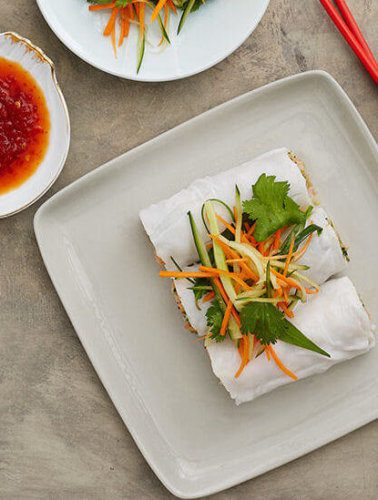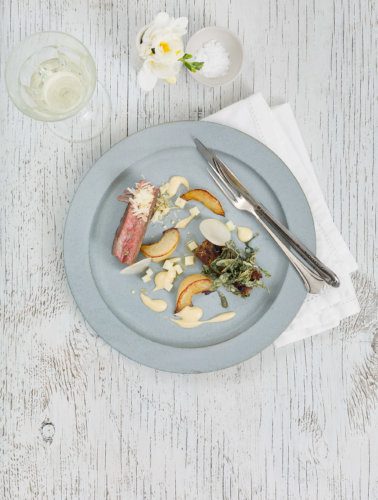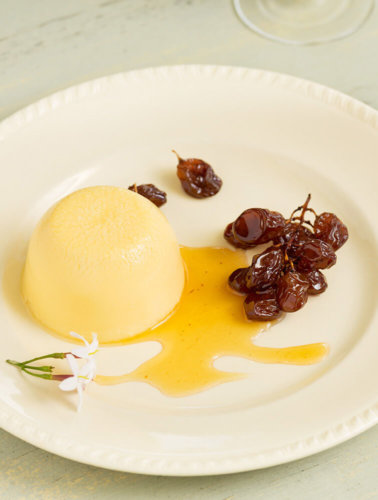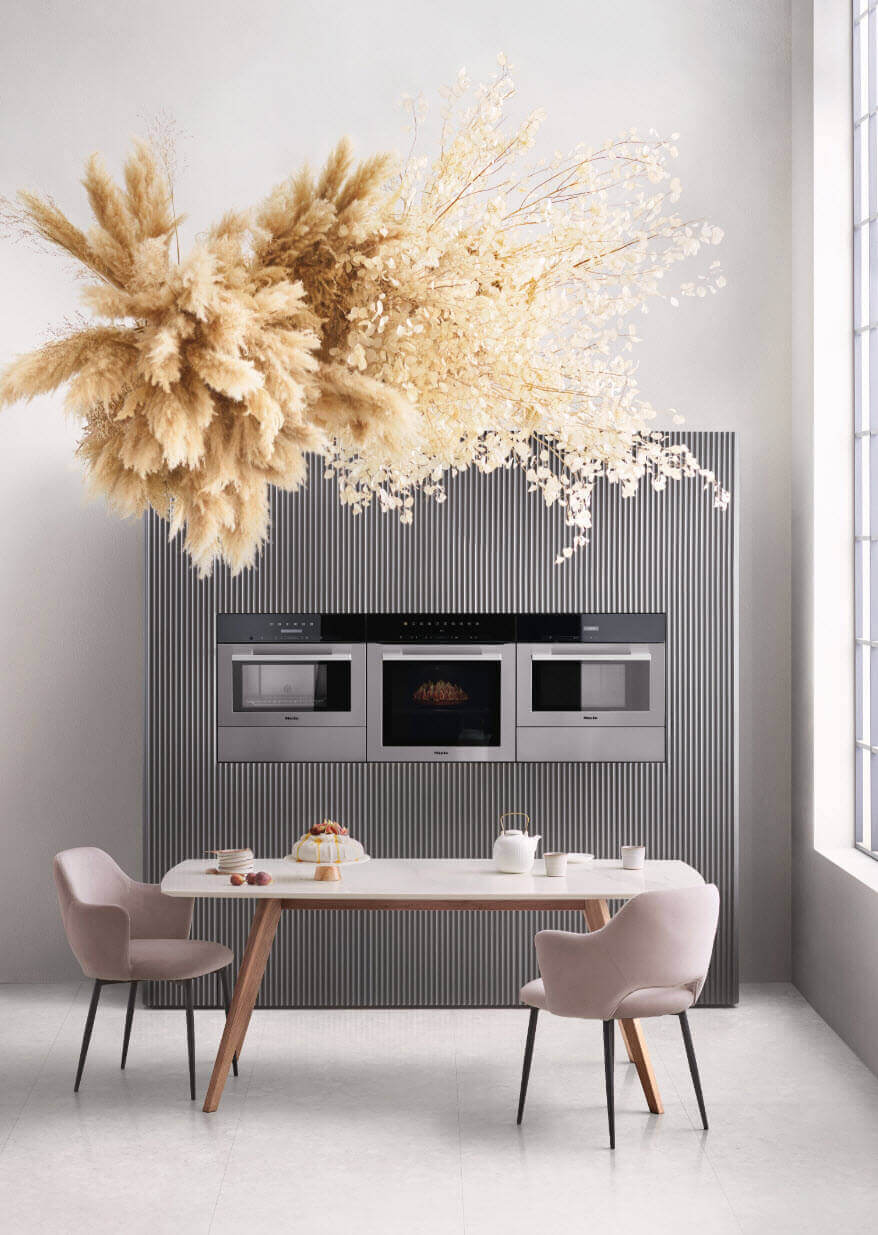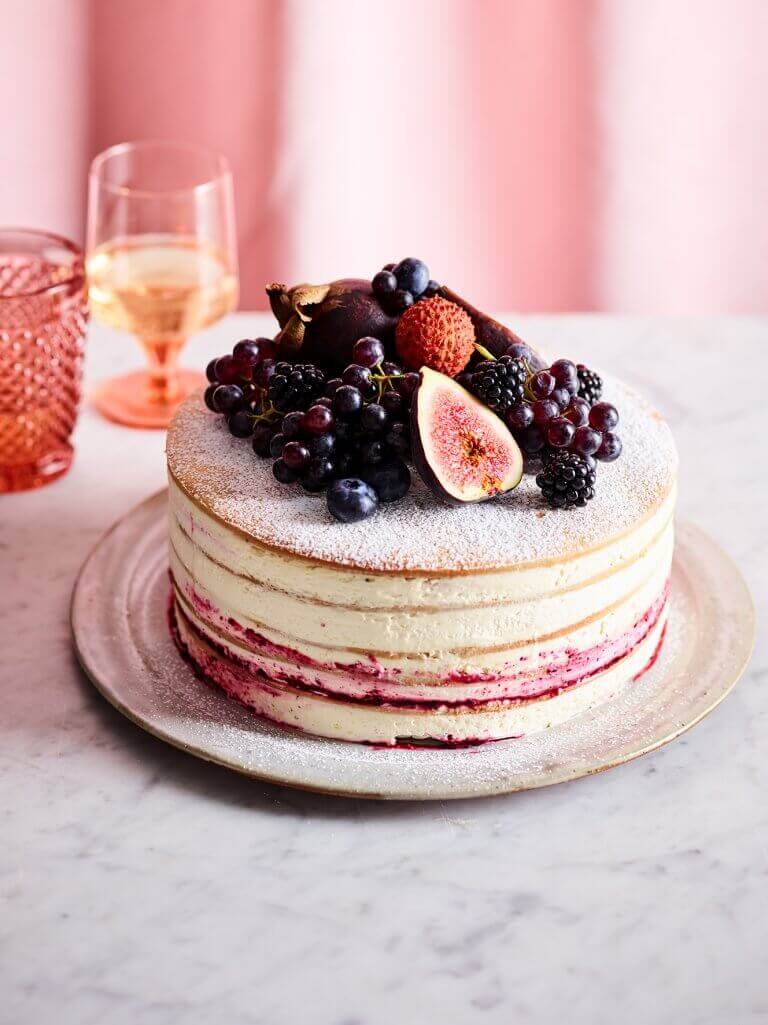

INGREDIENTS
4 x 150g pieces of snapper, middle cut
Murray River Sea Salt and white pepper to taste
Braised fennel
2 bulbs baby fennel, cut into thin wedges
375ml chicken stock
50g butter
1 tablespoon olive oil
Large pinch Murray River Sea Salt
4 thyme sprigs
Anchovy butter
100g butter
5 Ortiz anchovies, drained, chopped, oil reserved
1 tablespoon Murray River Sea Salt
Finely grated zest of 1 lemon
1 tablespoon Lilliput capers, rinsed
Broad beans
150g double peeled
broad beans
To serve
Pineapple sage
Marigold petals
Nasturtium leaves
Borage flowers
METHOD
Braised Fennel
- Place fennel in a casserole dish. Pour the chicken stock over the fennel and dot with butter. Season with salt. Lay the thyme sprigs on top of the fennel.
- Select Fan Plus 180°C and place fennel in the oven on shelf position 1, cook for 30 minutes, or until cooked through and softened. Remove from the oven and set aside in a warm place until required.
Anchovy butter
- Melt the butter with the anchovies and zest in a small pan on medium heat, Induction setting 6. Cook to a temperature of 130°C, when tested with a food thermometer, stirring occasionally. Add capers and stir to combine. Set aside.
Snapper
- Place the fish on a baking paper lined perforated steam tray. Steam at 85°C for 5 minutes. Depending on thickness of the fish, it may need another 1-2 minutes.
Broad beans
- Place broad beans in a perforated steam tray and Steam at 100°C for 1 minute.
To serve
- Place the fennel wedges in the centre of each plate. Top with the fish.
- Scatter the broad beans around the plate along with the herbs and flowers.
- Drizzle the anchovy butter over the fish. Serve immediately.
APPLIANCE / FUNCTION
Shannon Bennett
In 2011, acclaimed Australian chef Shannon Bennett undertook the greatest challenge of his life – moving his award winning Vue de monde restaurant to the dramatic new location on the 55th floor of Melbourne’s iconic Rialto building. From the beginning, Shannon’s goal has been to make Vue de monde Australia’s most sustainable restaurant. More than 50 cutting-edge technologies are being utilised, from an E-water system to ‘cold kitchen technology’ (no exposed flames or gas)




